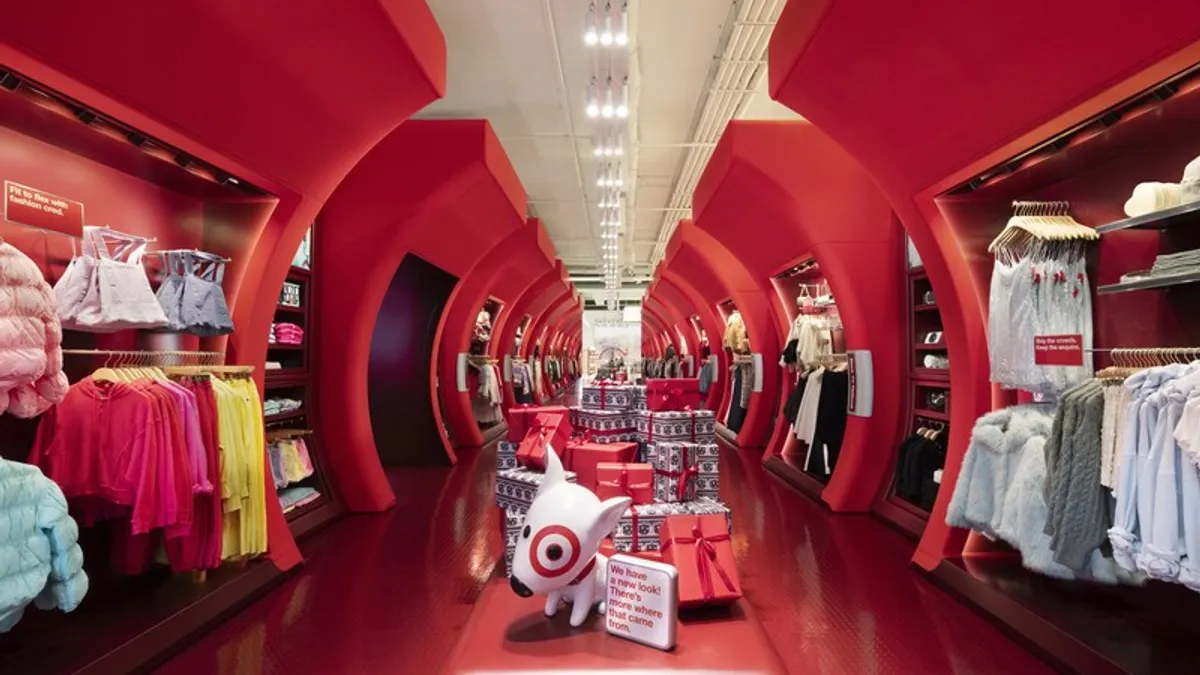The internet hasn't been entirely kind to retail. The dot-com bubble burst of the early 21st Century offered some lessons about wild speculation and misplaced expectations, but that hasn't saved retailers the ongoing expense of tight margins, supply chain upgrades, IT development and meeting customer expectations on all channels.
Or solved the troubling question of what to do about their stores.
E-commerce growth is outpacing overall retail sales, yet customers still depend on stores for the vast bulk of their shopping. That's boggling some of the best minds in retail, but one startup says it has the answer.
"We figured something out about retail that no one else has," said Vibhu Norby, a co-founder and the CEO of "store-as-a-service" platform b8ta, which recently picked up $19 million in funding from a group of investors led by none other than department store juggernaut Macy's. "If you shop in one of our stores, you will feel different because we have gone to such a great length to remove the idea of your visit being about buying a product."
The concept
B8ta leverages good store design and data to showcase goods, many from little-known makers, in its own stores and in other retailers' shop-in-shop spaces. In April, the company unveiled "Built by b8ta," a store-as-a-service platform that allows brands that traditionally haven’t operated stores to quickly set up new physical operations.
The software includes checkout, inventory, point of sale, inventory management, staff scheduling services and other capabilities. It was demonstrated earlier this year at the TED2018 conference in Vancouver, British Columbia, with the creation of a pop-up store featuring demonstrations of products, like the Jibo social home robot and the 16-lens Light L16 camera.
And if those products don't sound familiar, that's kind of the point. B8ta began as way for emerging products in a new category of consumer technology, the Internet of Things, to communicate their usefulness to the public. The company allows brands to tweak approaches to display, marketing, customer service and even the product themselves. B8ta sells no merchandise itself, instead charging "subscriptions" that brands pay to use their spaces and their Built by b8ta platform, for short or longer terms.
"At RetailNext, we call it 'interior analytics,' and a great many retailers use it to A:B test displays and fixtures," said Ray Hartjen, marketing director at in-store analytics firm RetailNext, whose platform b8ta itself uses. "What works best in test stores is then rolled out throughout the chain."
And a growing list of retailers are tapping into b8ta's capabilities. Lowe's partnered with b8ta in 2016 to roll out a series of SmartSpot shops inside the home improvement retailer's stores and earlier this month, Macy's announced a plan to scale its new pop-up concept, The Market @ Macy's, testing format spaces powered by b8ta's technology. Macy's also led a round of financing that ultimately netted $19 million.
Macy's will be testing various concepts before rolling out programs chain-wide.
The four layers
But b8ta, with Retailnext, is drilling down deeper than ever before into what goes on in the store. Just as Marshall McLuhan in the 1970s postulated that the medium is the message, b8ta's secret sauce for retail is that the medium — the experience inside the store — is the merchandise.
Of course, an awful lot of retailers and retail experts these days talk about "the customer experience," but as Norby himself says, those words are pretty meaningless on their own. Norby and his co-founders — Phillip Raub, William Mintun and Nick Mann, all formerly with Nest — see the customer experience as a four-layered phenomenon: visual perception of a product, touch and feel of a product, trying out or trying on a product and, finally, purchase and fulfillment (which ultimately depends on the supply chain).
"We’re designing for the activity of shopping," he told Retail Dive in an interview. "Frankly I think that will be most of retail in the future."
One observer who vehemently agrees is retail futurist Doug Stephens, who discusses b8ta in his book "Reengineering Retail: The Future of Selling in a Post-Digital World," published last year, and took the concept to Macy's executives in recent months.
"It’s the idea that stores are essentially a powerful form of physical media," he told Retail Dive in an email. "For b8ta the store is a key source of consumer data, a physical website if you will, where, when properly measured, brands can glean amazing levels of insight about their products and consumer interaction with them."
That depends on the ability to apply "interior analytics — measuring shopper behavior and engagement at each and every product display and feeding it back to the product manufacturer," Hartjen said. "B8ta has changed the way multiple brands are sold in a product showroom. Its ability to provide real-time feedback on a product's shopper engagement allows a brand to collect go-to-market data and collect insights, empowering it to make any corrective actions as necessary, from tweaking marketing assets to evolving the design and production of the product itself."
It's a model that Norby and Hartjen expect to be replicated across the industry, at shops, malls and now department stores. And it's a model that Stephens believes should be replicated.
"What b8ta enables a brand to do is rely less on the sale of products within the four walls of the store by supporting revenues with the 'retail as data' model," Stephens said. "This frees the retailer up to a great extent to bring in more intriguing or engaging products that brands are interested in gathering feedback on. And this ability to introduce unique products makes the entire shopping experience more interesting. I personally don’t see any real limitations on that."
The categories
So far, b8ta's sleek store demonstration tables and wall displays feature mostly electronics like robots, drones, computer-oriented toys and internet of things gadgetry, along with specialized gear like bicycles and skateboards.
"Macy’s really understands apparel. The fundamentals are very similar to electronics. There are new products that people want to try before they buy

Vibhu Norby
Co-founder and CEO, b8ta
B8ta's particular prowess in the home and consumer electronics space could provide an opportunity to bring new product categories to Macy's stores, which in recent decades have ceded market share of beauty, electronics and home goods to specialty players. But Macy's mostly sells apparel, a market largely untested by b8ta's concept. Norby isn't worried, but there are challenges.
"Macy’s really understands apparel," he said. "Our view is, how can we use the way we capture information and data and adapt it to that category? Right now— the fundamentals are very similar to electronics. There are new products that people want to try before they buy — and lots of new stuff from new people, who we could help to go to market. The interesting thing is where they're not similar, like how fast the fashion cycle is. In electronics, once you have a product, you won’t introduce a new one for two years. In some ways our model is even better for apparel — because we can rearrange the store so quickly."
While b8ta's niche today is built mainly around IoT products, its retail analytics are product-agnostic, according to Hartjen. "For specialty apparel, the analytics perspective is the same," he said, citing a litany of data points to capture from in-store apparel selling: The percentage of store shoppers who happen by a display, and of those, how many stop and engage with the product or the display, and for how long? Of those who engage, how many pick up the product or try it on? Which and how many pieces of clothing are left in fitting rooms? Which and how many sell? Do customers engaging with the display buy more?
"If there's not conversion, but a lot of engagement, it's not a question of attracting a shopper's attention," Hartjen said. "Rather, it might be touch and feel, price, or fit. If a product goes to the fitting room, but not to POS, then maybe it's fit, color, etc."
The challenges
Shopping is still about buying and selling goods, and b8ta isn't out to change that.
"It is about product ultimately," Norby said. "But our viewpoint at b8ta is that, to introduce someone to a product is first introducing them to an idea."
It seems clear that b8ta has figured out something about the nature of shopping in stores, and how (and why) to measure it. The question remains how far the concept can go.
As Stephens sees it, the company could be limited by its new tie-up with a legacy retailer that may not be quite ready to embrace the vision fully. "The biggest challenge I foresee for b8ta will be to bring Macy’s over to a new way of looking at their business," he said. "What b8ta provides Macy’s with is one of those ancillary revenue streams and it could significantly boost their overall performance if they employ it well."
In other words, capitalizing on merchandising and space in a fundamentally new way.
"Imagine if hundreds or thousands of Macy's vendors began subscribing to them for insights into the performance and consumer engagement with their products," Stephens said. "That could amount to a considerable revenue stream. Macy’s has to be willing to embrace this new approach. The good news is, from the limited time I’ve spent with [Macy's CEO] Jeff Gennette, I do think he gets it."






















